
5 Platforms To Maximize Your Chicago-Based Small Business Brand
Online reputation management (ORM) is a critical solution to provide the right strategy to build a brand and simultaneously attract potential customers' interest in choosing your products or services.
Everything a business marketing team does is to influence or educate people by improving and responding to customer reviews or feedback about the products or services they receive.
These brands commonly refer to popular sites or platforms: Google My Business, Angie's List, and Yelp. A significant objective of online brand reputation management is to encourage positive comments from customers.
Top 5 platforms to maximize your Chicago-based small business brand:
1. Local Clarity: Local Clarity is the world's most scalable review, and local search management platform for multi-location businesses, franchises, and agencies to monitor and respond to reviews and improve their online reputation. The platform helps users gain insight into local search results.
Key benefits of using Local Clarity:
• Every day, Google My Business aggregates insights for all business locations into a Local Clarity dashboard that allows users to group, filter, and analyze data.
• The report suite allows users to save, download, share and schedule reports for all locations.
• Users can respond to reviews using pre-written replies or personalized messages.
2. Hootsuite: Hootsuite helps you build your brand, strengthen customer connections, and get accurate business results with social media. With the help of Hootsuite, you can launch brilliant social campaigns, deliver a 5-star social commerce experience, and manage customer conversations in one place.
Key benefits of using Hootsuite:
• Save time by scheduling posts for Instagram, Twitter, Facebook, LinkedIn, Pinterest, and YouTube from one dashboard.
• Managing approvals and monitoring team performance.
• Better understand what your customers want with analytics and easily integrate those insights into customizable reports.
3. Google Alerts: Google Alerts is another simple way brands monitor their online reputation.
Key benefits of using Google Alerts:
• Type in the brand name or a phrase related to the brand, and an email will be sent to the brand's company with details of new mentions on the Internet.
• This simple tool from Google makes it easier for brands to easily manage their online reputation as they can instantly identify brand sentiment.
4. Trustpilot: Trustpilot is a customer review management manifesto that helps online businesses establish a trusted brand and connect with customers by collecting reviews and assembly feedback.
Key benefits of using Trustpilot:
• Seamlessly automate the customer review collection process and monitor customer feedback throughout the brand's customer journey.
• Trustpilot helps drive more traffic from both paid and organic search results.
• Connect with favourite third-party tools like Magento, Hootsuite, Salesforce, Zapier, Prestashop, Mailchimp, and more.
5. Marketing 360: Marketing 360 is available for small businesses and offers the following support alternative phone support, email/help desk, chat, and knowledge base.
Key benefits of using Marketing 360:
• Singular platform
• Payments
• Scheduling & Booking
• Invoice
• Modern Websites
Resource:
https://www.getapp.com/marketing-software/reputation-management/org/small-business/
https://www.capterra.com/reputation-management-software/s/small-businesses/
https://www.commsights.com/improve-brand-reputation-with-online-software/
Disclaimer:
Wherever any material is quoted as sourced from the published text with publishing rights vested in an individual, it is stated that it is a pure quotation and has no intention to claim it as our own.
Image Source: www.freepik.com
52 adminJanuary 20, 2023
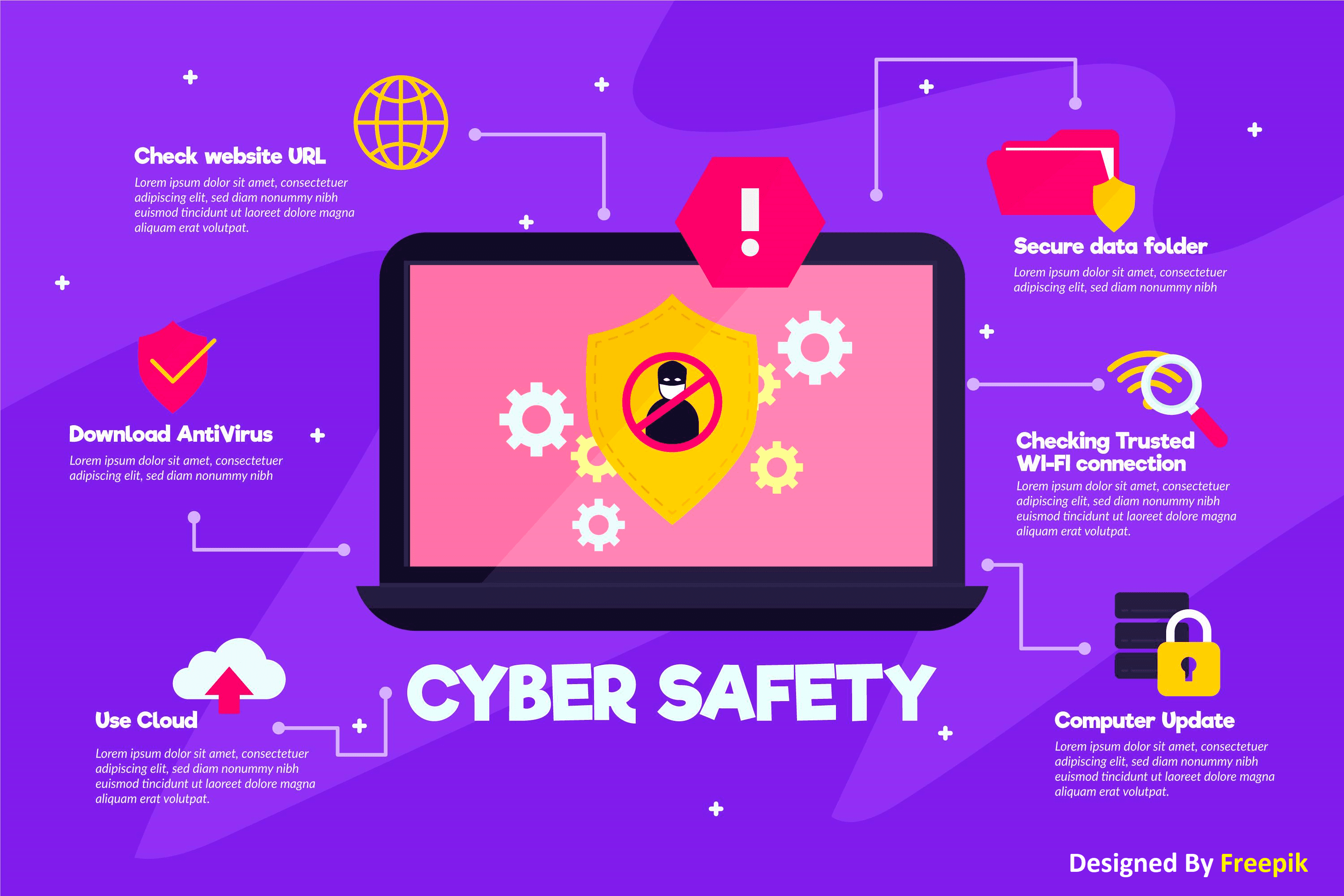
Top 5 Cyber Threats You Need To Make Your Agency Clients Aware Of
As attackers automate more and more attacks, it's easier for them to target hundreds, if not thousands, of small businesses at once. Small businesses often have less stringent technical defenses, less consciousness of threats, and less time and resources for cyber security. It makes them easy targets for hackers than larger businesses.
For these reasons, agency clients need to be aware of threats and how to stop them. This article will cover the Top 5 cyber threats you need to make your agency clients aware of.
Phishing Attacks: Phishing is one of the most prominent and widespread types of cyber-attacks. The social engineering attack is where the attacker impersonates a trusted contact and sends fake mail to the victim. The victim opens the mail and clicks on the malicious link or opens the attachment of the mail. Phishing attackers gain access to confidential information and account credentials by doing so.
Malware Attack: It is one of the most common cyber-attacks. “Malware” refers to malicious software viruses, including worms, spyware, ransomware, adware, and Trojans. A Trojan virus disguises itself as legitimate software. Ransomware blocks access to critical components of a network, while spyware is software that steals all your confidential data without your knowledge. Malware breaches networks through vulnerabilities. When a user clicks on a dangerous link, downloads an email attachment, or when a contaminated pen drive is used.
Weak Passwords: Another significant threat small businesses face is employees using weak or easily guessed passwords. Many Agencies Clients use multiple cloud-based services, which require different accounts. These cloud-based services can often contain sensitive data and financial records. Using easily guessed passwords, or using the same password for multiple accounts, can compromise or hack this data.
Man in the Middle: A man-in-the-middle attack is also known as an eavesdropping attack. In this attack, the attacker comes in between the two-party communication, i.e., hijacks the session between the client and the host. By doing this, hackers steal and manipulate your data. The client-server communication is cut off; the communication line goes through the hacker.
Denial-of-Service Attack: Denial of service is a significant risk for companies. In this attack, Attackers target systems, networks, or servers and flood them with traffic to exhaust their resources and bandwidth. When this happens, it becomes overwhelming for the server to keep up with incoming requests, resulting in the website it hosts either shutting down or slowing down. The leaves legal service requests need to be addressed. It is also known as a DDoS attack when attackers use multiple compromised systems to launch this Denial-of-Service attack.
Resource:
https://expertinsights.com/insights/the-top-5-biggest-cyber-security-threats-that-small-businesses-face-and-how-to-stop-them/
https://onlinedegrees.und.edu/blog/types-of-cyber-security-threats/
https://www.simplilearn.com/tutorials/cyber-security-tutorial/types-of-cyber-attacks
Disclaimer:
Wherever any material is quoted as sourced from the published text with publishing rights vested in an individual, it is stated that it is a pure quotation and has no intention to claim it as our own.
Image Source: www.freepik.com
86 adminJanuary 19, 2023
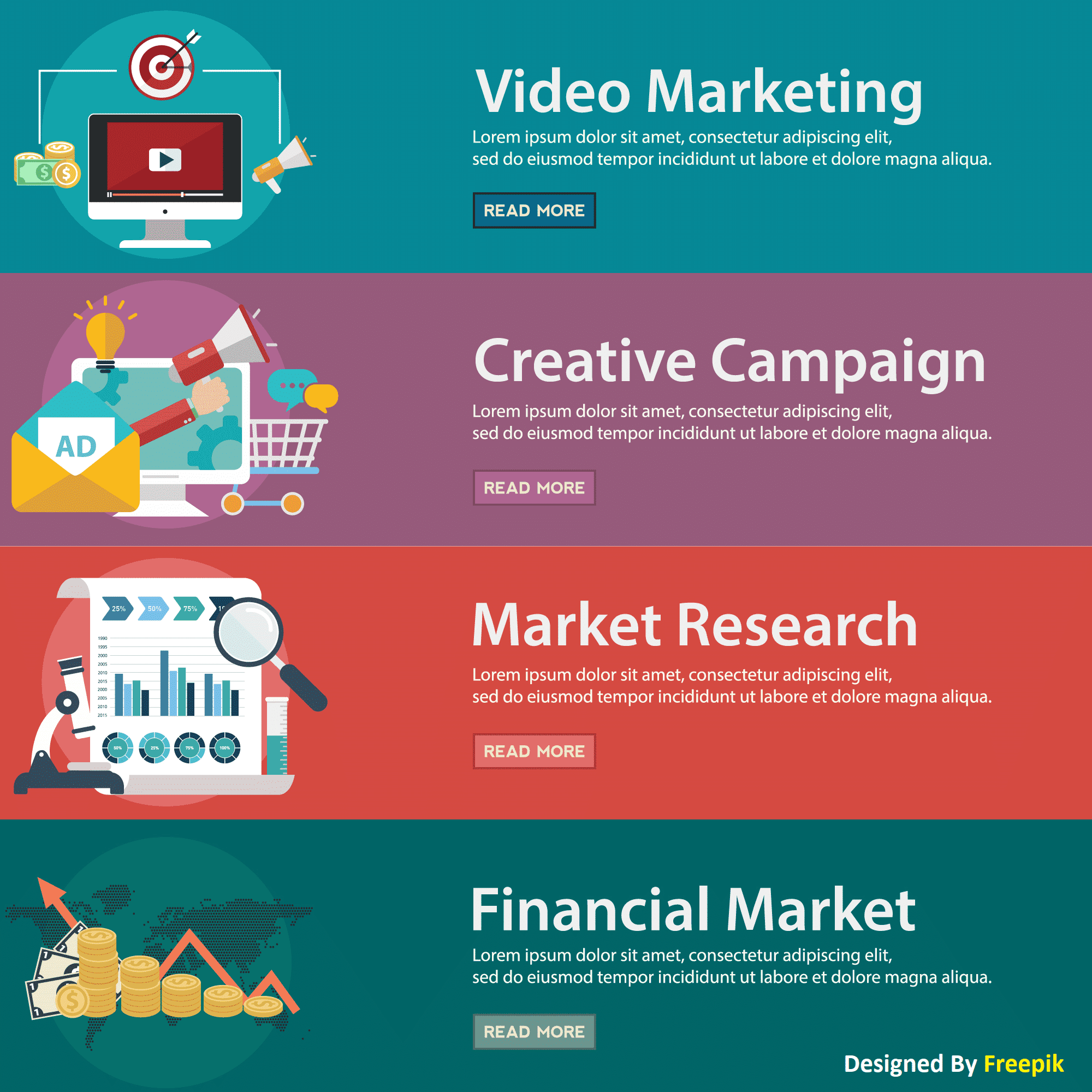
How Small Businesses In Chicago Can Keep The Marketing Funnel Updated
The Benefits of Having a Marketing Funnel:
• Streamline the customer journey.
• Help to Make analytics easy to track.
• Help to Identify areas that need improvement.
• Help define a sales methodology.
• Reduce costs.
• Increase revenues.
Steps When Updating Your small businesses Marketing Funnel :
There are a few essential things a business should look out for when deciding to update its dated marketing funnel to stay relevant in the modern setting.
1. Your Research: The world is changing fast. More is needed to look at quarterly research. Brands need consistent audits to help inform decisions across all marketing channels.
2. Double Down Your Efforts: There is often a tendency to pull back on marketing during tough economic or uncertain times when, in fact, the opposite should be happening. Refining the marketing funnel process and messaging should be an ongoing process.
3. Look At Changes In Customer Needs: Continuously monitor performance to evaluate success and failure, focusing first on your pain points or problem areas. Evaluate your interactions with your clients to ensure their experience is excellent.
4. Consider Your Key Performance Indicators (KPI): Look at your key performance indicators. KPIs typically help determine a company's strategic, financial, and operational achievements relative to other businesses in the same sector.
5. Make Sure It Reflects The User Journey: Marketing funnels should reflect the user journey rather than being driven by sales cycles, target closing times, and the brand's preferred communication tactics.
6. Look At The Bottom Of The Funnel: Look at the bottom of the funnel. If you can't convert people into customers, provide a great experience, and retain them over time, it doesn't matter how much work you do at the top of the funnel.
7. Focus On-High Potential Audiences: Focus on high-potential audiences who have already shown interest in your brand. Be more specific with your ads and target them based on their audience demographics.
8. Look At Your Competitors: Look at what your competitors are doing. Where are they operating paid traffic? Your competitors may have a better process and system than yours. Go through each of their marketing funnels. Select their content. Check out their Facebook ad library of active running ads. As you improve your process, leverage their strengths because they already carry your customers.
Resource:
https://www.forbes.com/sites/forbesagencycouncil/2020/09/25/16-critical-steps-when-updating-your-companys-marketing-funnel/?sh=7ac617de1e3a
https://www.crowdspring.com/blog/marketing-funnels/
Disclaimer:
Wherever any material is quoted as sourced from the published text with publishing rights vested in an individual, it is stated that it is a pure quotation and has no intention to claim it as our own.
Image Source: www.freepik.com
65 adminJanuary 18, 2023

How To Scale Your Agency In The New VUCA World
Even on the ground, change needs to happen faster. Enterprises are plagued with concerns about the effectiveness of their digital efforts. Despite significant investments in new technologies, success in high performance and business impact usually fail to live up to expectations. Companies must find ways to bridge this gap between digital's enormous potential and the current reality of its sub-par impact.
What does VUCA mean?
VUCA defines volatility, uncertainty, complexity, and ambiguity -- qualities make it challenging to analyze, respond to, or plan for a situation or condition.
Minimizing these traits can significantly improve a leader's strategic abilities and produce better results.
Volatility is the quality of being subject to frequent, rapid, and significant changes. Small triggers can lead to big changes.
Uncertainty occurs when events and outcomes are unpredictable. Cause and effect be better understood, and experience may not apply to the situation. It needs to be made clear which direction events will take.
Complexity involves many issues and factors, some of which may be intricately interconnected. The relationship between things and people is challenging to understand. A change in one place can cause unexpected changes in other things. Multiple layers obscure cause and effect, and it is unclear which factors are important in decision-making.
Ambiguity is a need for clarity and difficulty in understanding a situation. Information can be misread or misinterpreted. In ambiguous cases, not all facts are clear. The goal or intended outcome may only be apparent to some parties involved.
Digital Strategy in a VUCA World:
A digital strategy lays the foundation for delivering the right experience based on real-time intelligence.
There are three impact areas around which companies can align their digital strategy and get the best results:
Customer Experience: Digital transformation allows enterprises to move from creating disparate customer experiences to an integrated, customer-centric approach. With the growing number of options available to do this and the accompanying digital clutter, enterprises need to provide a frictionless and intuitive customer experience. Ensuring a seamless, well-integrated, omnichannel communication strategy enhances the customer experience. Often, customer experiences are determined by how your brand interacts with the customer.
A company's response system can make or break the relationship when customers call, email, or use social media to interact with enterprises.
Acceleration: One of the most significant opportunities in digital technology and accompanying business models is scalability. They can allow you to create and grow new businesses faster. However, you need to find the right product-market fit, develop a suitable business model, make intelligent technology choices, and leverage the ecosystem smartly, where a dynamic strategy, broken down into micro levels, becomes critical to success. Keep in mind that It's a continual change process.
Insight: The speed, volume, and variety of data that is now possible present enormous opportunities for our customers, such as one-to-one personalization on a level, And helping enterprises improve the quality of their decision-making to another level. AI and machine learning bring tremendous opportunities. The opportunities provided by data are unprecedented. It is fair to suggest that digital strategy is data strategy!
A digital strategy stipulation a change in mindset as organizations move from legacy to digital. It is an overall strategy, not just a strategy related to a particular performance or peculiar this is a complete shake-up of the status quo. It is cross-functional. While the system needs to be holistic in a VUCA world, fundamentally, the approach to the process needs to be rethought.
In short, VUCA is accurate, and we're already during massive digital transformation and disruption. Enterprises can step up and leapfrog the competition by adopting ambitious digital strategies.
Resource:
https://www.cioaxis.com/cio-insights/building-scalable-models-in-the-vuca-world-the-cio-view
Disclaimer:
Wherever any material is quoted as sourced from the published text with publishing rights vested in an individual, it is stated that it is a pure quotation and has no intention to claim it as our own.
Image Source: www.freepik.com
70 adminJanuary 17, 2023

5 Reports You Should Monitor On Your Cybersecurity Dashboard?
In an ever-evolving threat space, there are ways to optimize security postures and plans with better, more effective reporting.
A good dashboard is key to summarizing data from a monitoring solution, and here are five reports you should be monitoring on your cybersecurity dashboard.
1. Mean-Time-to-Detect (MTTD) and Mean-Time-to-Resolve (MTTR): How long do security threats go unnoticed? Mean-Time-to-Detect (MTTD) measures how long your team is aware of indicators of understanding and other security threats. What is the average response time for your team to acknowledge a cyber-attack once it becomes aware of it? A better measure of the quality of implementation of your incident response plan.
2. Number of systems with known vulnerabilities: Knowing the number of endangered assets in your environment is a crucial cybersecurity metric for determining the risk to your business. Managing updates and patches is a complex process, but very important to avoid errors in your environment. A vulnerability scan that covers all assets will indicate what needs to be done to improve your company's security posture.
3. SSL certificates: An SSL certificate is a small-scale file that certifies the ownership of the cryptographic keys of the website or company with which the data is being exchanged, guaranteeing the transaction's authenticity. Monitoring the security requirements for each certificate and ensuring that they are correctly configured on the server prevents them from falling into the wrong hands and that your company's digital identity is not used to steal user information.
4. Unidentified Devices on Internal Networks: When employees bring their own devices, they can introduce malware and other cyber risks, as can poorly configured Internet of Things (IoT) devices, which is why a network intrusion detection system is an essential part of organization security.
5. No "Superuser" access level: Best practices in information security management include complete control of user access levels to company resources, requiring employees to access only the data, systems, and assets necessary for their work. Identifying the access levels of all network users allows you to adjust as needed by blocking any superuser or administrator that doesn't make sense.
Resource:
https://valerity.com/2020/10/20/the-5-aspects-your-cybersecurity-dashboard-should-provide/
https://cipher.com/blog/10-cybersecurity-metrics-you-should-be-monitoring/
https://www.upguard.com/blog/cybersecurity-metrics
Disclaimer:
Wherever any material is quoted as sourced from the published text with publishing rights vested in an individual, it is stated that it is a pure quotation and has no intention to claim it as our own.
Image Source: www.freepik.com
68 adminJanuary 16, 2023

Load Testing And Load Testing Tools
A load test is used to help determine the following:
• Response time returned from critical actions in your application is acceptable compared to specifications, user requirements, or KPIs.
• Does your core business functionality behave properly under heavy load?
The Top Load Testing Tools List:
Load Ninja: Load Ninja by Smart Bear allows you to quickly create scriptless sophisticated load tests, reducing test time by 50%, replacing load emulators with real browsers, and getting actionable, browser-based metrics, all at Ninja speed.
Load Ninja Features:
• Scriptless load test creation & playback.
• Accurate browser load test execution at scale.
• VU Debugger – debug tests in real-time.
• VU Inspector – manages virtual user activity in real-time.
• Hosted on the cloud
• No server machine & upkeep is required.
• They have sophisticated browser-based metrics with analytics & reporting features.
Web LOAD: Web load is the tool of choice for industries with heavy user loads and complex testing requirements. It allows you to load and stress test any Internet application by generating loads from the cloud and on-premises machines.
Web Load Features:
• Flexible deployment: cloud (SaaS), hybrid or on-prem
• Clever scripting based on native JavaScript
• Robust correlation for handling dynamic values
• Rich dashboard for performance analysis
• Excellent customer support
Head Spin: Head Spin allows you to optimize the digital experience with its performance testing capabilities. It can help users monitor, identify, fix, and optimize performance issues across applications, devices, networks, and third-party interfaces.
Head Spin Features:
• Monitor and optimize performance throughout the user journey
• Performance data on real-world conditions
• With AI capabilities to automatically identify performance issues in testing before they impact users.
• Test over a hundred locations on thousands of real devices, including SIM card-enabled devices.
Apache JMeter: The Apache JMeter tool can be loaded into a server or network to test performance and analyze its performance under different scenarios. Initially, it was introduced to test web applications but later expanded its scope.
Apache JMeter Features:
• This free tool does not demand sophisticated infrastructure for load testing and supports multiple load injectors managed by a single controller.
• It is a performance testing tool that is highly portable and supports 100% of all Java-based apps.
• Less scripting effort compared to API performance testing tools because of its friendly GUI.
• Simple charts are sufficient for analyzing critical load-related statistics/resource usage monitors.
• Supports integrated real-time, Tomcat collectors for monitoring.
Resource:
https://testguild.com/load-testing-tools/
https://www.guru99.com/performance-testing-tools.html
https://www.softwaretestinghelp.com/performance-testing-tools-load-testing-tools/
Disclaimer:
Wherever any material is quoted as sourced from the published text with publishing rights vested in an individual, it is stated that it is a pure quotation and has no intention to claim it as our own.
Image Source: www.freepik.com
47 adminJanuary 13, 2023

Top 5 Testing Strategies Your Start-Up Needs To Have In Place
Here are the top 5 software testing strategies that you can adopt to ensure the perfect product:
1. Align your QA strategy to your business Start Up goals:
A product is launched in the market with specific key achievements in mind. These goals must be communicated throughout the company, including the QA and development teams. This way, developers will have a clear idea of the product you have in mind.
The QA team will strategize based on your needs and test to perfect the aspects critical to your goals. It prevents a lot of post-launch debugging or troubleshooting.
It also makes it easier to strategize for the QA team, who can create a detailed plan focused on your goals, break down tasks as needed, and work with the development team for QA testing and debugging before launch.
2. Create a detailed plan for testing / QA processes:
Documentation is key to maintaining quality consistency. This plan can be divided into four parts:
1. Quality management plan
2. Testing strategy
3. Test Plan
4. Test Case
Each of these documents should contain the focus of the process and the critical elements involved—a standard policy to follow during the process with individuals interested in the trial.
3. A suitable work environment for the team
Here are some steps rules you can take to ensure a healthy team environment:
• Clear demarcation of tasks
• Involvement of the QA team in the development
• increase their knowledge base in terms of the business aspect of production
• Open communication
4. Testing for User Acceptance
A good product is developed with the end user in mind. A QA team can understand the defined user personas for development and test based on these user types.
Here's how you can go about it:
• Define a method for your UAT process
• Conduct the test in an organized way
• Document the process
5. Measuring Code Quality
Here are some metrics that you can use to measure code quality:
Reliability: it defines how smoothly your code can run without fail.
Performance Efficiency: Performance efficiency can be defined by the quick response of an application to any given functionality.
Security: Security can be measured by the application's ability to detect any such problems and the time required to fix these errors.
Maintainability: it depends on the complexity of the code. Maintainability can be measured based on how many lines of code there are and how easy or difficult it is to find and modify a given string.
Rate of Delivery: it is based on how quickly the software is updated and delivered to end users.
Here are some testing strategies your start-startup needs to have to ensure a great quality product that best uses the given resources.
Resource:
https://cloudqa.io/5-software-testing-strategies-to-uplift-business-growth/
https://2muchcoffee.com/blog/how-to-choose-the-best-testing-strategy-for-startups/
Disclaimer:
Wherever any material is quoted as sourced from the published text with publishing rights vested in an individual, it is stated that it is a pure quotation and has no intention to claim it as our own.
Image Source: www.freepik.com
50 adminJanuary 12, 2023
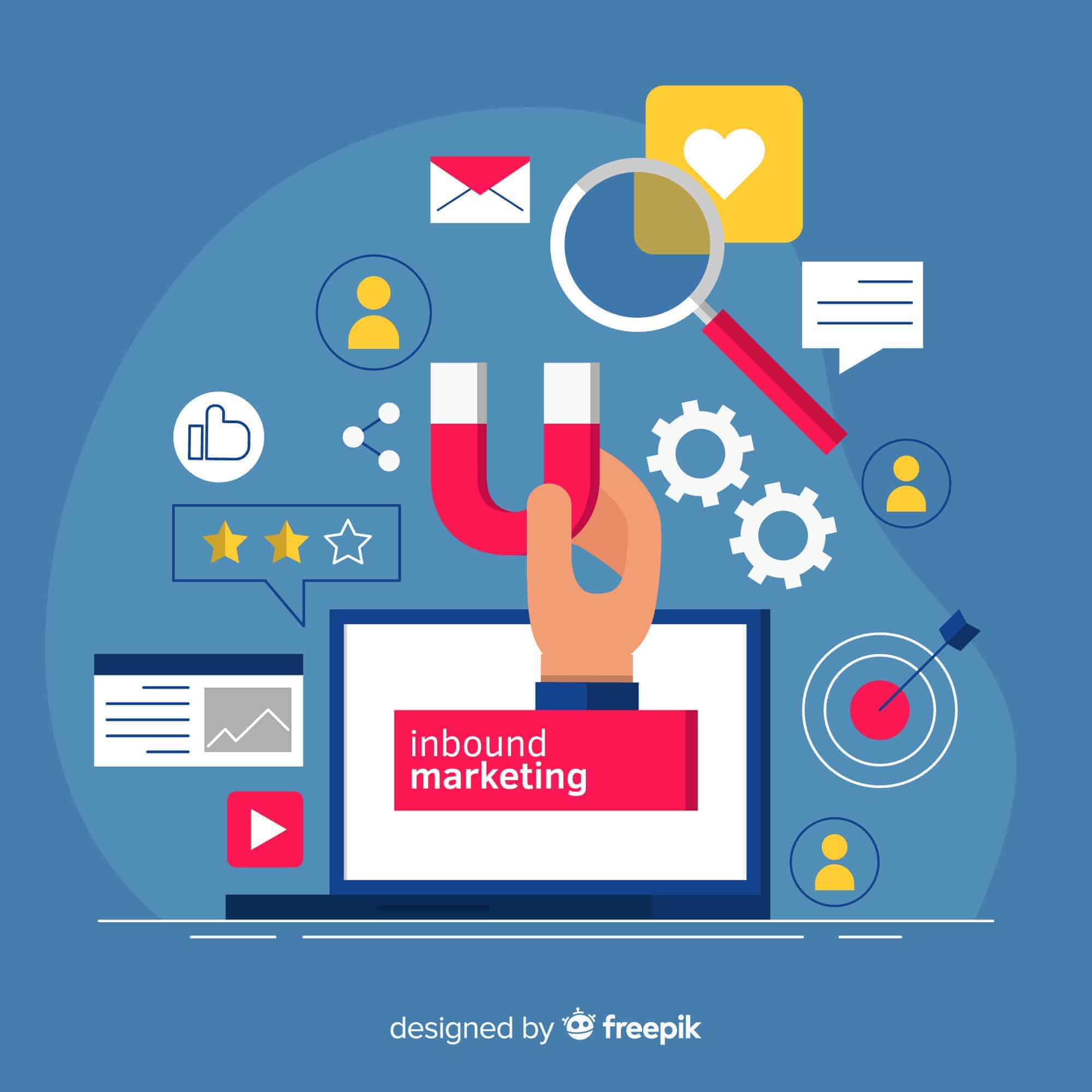
Outdo Your Competitors By Using These Customer Engagement Tricks
What is a Customer Engagement Strategy?
A customer engagement plan of action organizes interactions and activities into a well-structured plan to create the ultimate customer experience, including pre-and post-purchase. This process includes a variety of communication channels to build relationships, improve satisfaction, and actively nurture your customer base.
The Benefits of Implementing Customer Engagement Tricks:
When customers have a satisfying experience, they are more likely to buy, but it doesn't always happen immediately. Your customer experience is how customers perceive your brand or how it is perceived and received from their perspective. Customer engagement is how the customer experiences and interacts with the brand, including their decisions and how they interact and react to your products and services.
Keep a Customer-Centric Mindset:
The only way to ensure customers are satisfied with the experience is to provide what they want. From data collection (through your CRM, sales engagement platform, etc.) to customer feedback and forums, creating an engagement strategy involves social listening and research, just like brand promotion. The more you know about your customer, the better you can target your message and experience.
6 Proven Customer Engagement Tricks:
1. Share Your Company's Story, Mission, and Vision:
The stories are memorable, and people get to relate to your account. They give customers a reason to trust your company. Humanize your brand with a message highlighting your mission, vision, and story. Help customers understand you're 'why' for business.
2. Practice Active Listening:
Customers are very vocal about what they want, so listen. What are they saying and not saying about your business? How do they contrast you to your competitors? Make it easy for customers to give a reaction, share their experiences, record responses and follow up.
3. Provide Some Free Benefits to Users:
Reward users for being loyal customers with something free: things your customers need. Give them free information on how to get the most out of your product or a resource on cost/benefit analysis. Freebies are a way to attract new customers.
4. Take a Social Approach:
Be active on social media sites like Twitter, Facebook, and Instagram. This platform is used for people who want to express their problems with the business or praise them.
5. Address Feedback:
User feedback is one way to measure your customer satisfaction. Collect a mix of technical, quantitative data (through your CRM, sales engagement platform, etc.) and anecdotal, qualitative feedback to understand your customer experience fully.
6. Create a Customer Success Centre:
Set your customers up to win. The Customer Success Centre helps customers access resources and get answers to their questions. The goal is to ensure customers have everything they need to make the right purchase decision or use your products to their fullest potential. With the proper support, communication, systems, and information, your customers may be able to act.
Resource:
https://www.outreach.io/blog/customer-engagement-strategies-for-increasing-conversions
https://www.openpathdigital.com/blog/customer-engagement
Disclaimer:
Wherever any material is quoted as sourced from the published text with publishing rights vested in an individual, it is stated that it is a pure quotation and has no intention to claim it as our own.
Image Source: www.freepik.com
71 adminJanuary 11, 2023
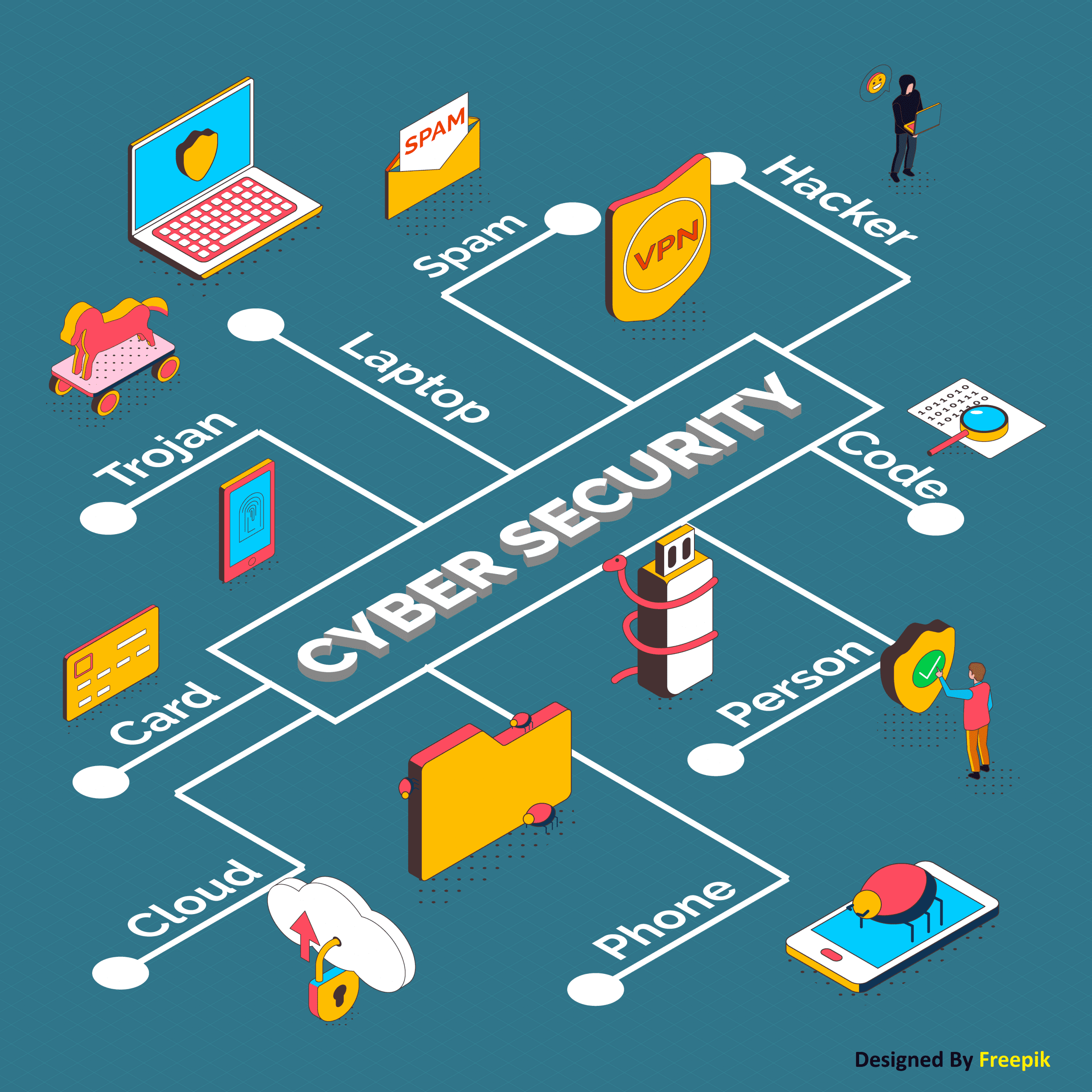
What Should Be The Cyber Security Spent In Your Clients’ Maintenance Contract?
Everything is digital these days, both on-premises and in the cloud. So cyber security personnel and security measures are something you will have to spend money on. But how should your company decide how much money to budget for security? And how should your company decide how to spend it?
Creating a Cybersecurity Budget Breakdown:
All organizations should consider five main categories when allocating their cyber security maintenance contracts.
Compliance: Some compliance ordinances dictate security budgets distribute in the healthcare sector. For example, HIPAA defines data privacy and security obligation to protect individuals' medical records and other personal health information. To meet these obligations and avoid potentially significant fines, CISOs must budget for specific tools and technologies.
Ongoing existing risk assessments: Proactive CISOs must continuously monitor the effectiveness of security controls in their environment and calibrate against prevailing attack vectors. Suppose the risk rises above a previously agreed-upon threshold. In that case, the CISO needs to assess the risk and discuss the risk with management to find another budget or reallocate the budget -- or agree to accept a higher risk level. Tools and services for budgets in this category include cyber insurance, bug bounty initiatives, penetration testing, and incident response.
Ongoing security training: Security training is no longer an event on the annual mandatory compliance checklist. Every employee and contractor must be involved in this ongoing effort. Using public shame or fear to motivate employees is not adequate. Instead, cybersecurity training needs to be memorable.
New business initiatives: A CISO must evaluate any new business initiative adopted within the company and implement a security budget to ensure that the company and its new customers remain secure. For example, marketing departments may outsource content creation to an overseas third-party provider or decide to store all customer support cases in a cloud storage platform. Both of these scenarios have additional risks, which CISOs and security teams should address before implementing.
Business priority shifts: It can be related to people, technology, or revenue. From a public perspective, an example of a business priority shift is the hybrid, or, in some cases, permanent work-from-home model and the adaptation required to maintain cybersecurity best practices. From employee onboarding -- and offboarding -- to employee use of a shared home router, local offline data storage, home privacy needs to personal devices, and video conferencing, all require security adaptation and budget realignment.
What is a typical cybersecurity budget?
While there is no versatile answer when determining what a "typical budget" looks like for cybersecurity operations, some studies can provide some sensitivity.
Recent research by Deloitte and the Financial Services Information Sharing and Analysis Centre found that financial services spend an average of 10% of their IT budgets on cybersecurity. It costs approximately 0.2% to 0.9% of company revenue or $1,300 to $3,000 per full-time employee. For a more significant picture specification, consider that Microsoft CEO Satya Nadella recently disclosed in a statement that the tech behemoth would "invest more than $1 billion annually in cybersecurity for the foreseeable future". Finally, it is worth noting that the US President's 2019 budget allocated $15 billion to spend on cybersecurity, which is about 0.3% of the entire economic budget ($4.746 trillion).
Resource:
https://www.mstech.com/client-contract-includes-cybersecurity-restrictions/
https://www.techtarget.com/searchsecurity/tip/Cybersecurity-budget-breakdown-and-best-practices
https://cybersecurity.att.com/blogs/security-essentials/how-to-justify-your-cybersecurity-budget
Disclaimer:
Wherever any material is quoted as sourced from the published text with publishing rights vested in an individual, it is stated that it is a pure quotation and has no intention to claim it as our own.
Image Source: www.freepik.com
63 adminJanuary 6, 2023

Remembering 80-20 And How It Applies To Your Agency Business
How Does the 80-20 Rule Work?
This rule often indicates that 80% of a company's revenue is given rise to 20% of its customers.
This way, it can be profitable for a company to focus on the 20% of clients that account for 80% of revenue and market to them. By doing so, the company can retain those customers and acquire new customers with similar characteristics.
How To Appeal the 80/20 Rule in Business:
It will help if you get maximum output from minimum input when running an agency business. Here are how intelligent companies work. So, work on the three things that will provide you with the best results.
1. Be Clear on What You Are Doing: As a business proprietor, you need to understand your job thoroughly. Once you understand each aspect of your service offering and your business, you can identify problem areas and work on these problems will increase your business efficiency.
2. Measure: Everything must be measured using analytical tools. Here is the only method to find out what works and doesn't. Many analytical tools are available online. For web analytics, you can use Google Analytics to set up goals and check your performance.
3. Think Boldly and Work Smart: Working smart requires you to think outside the box. Be brave and take some chances. Remember, take calculated risks only when the odds are in your favor.
How to Use the 80/20 Principle?
1. Look at Social Media Results: Social media is prevalent these days. Businesses use social media for better business leads. It also helps in building brand loyalty. Using social media analytics, you can find out which social media strategy works for you on which platforms. You can use this insight to focus on methods that deliver 80% of the results.
2. Know Your Customers and How They Order: Understanding your customer is very important. So studying how they order and how much they order. This information is essential to find the people who contribute the most to your revenue. Finding this information is accessible using analytics.
3. Budget Efficiency: Both over-budget and under-budget are detrimental to a business. Studies show that most new and small businesses spend 7% of their revenue on marketing. Using the 80/20 rule, you need to figure out the marketing spend that will get the best results.
4. Time Management: Being a business owner, you probably think that you need to work 24/7 to be successful. Streamlining your processes is another way to increase your productivity. The 80/20 rule is everywhere. 20% of the activities undertaken cause 80% of the time wasted. To manage time better, take steps to analyze, understand, and reduce just 20% of activities.
5. Leave That Which Does Not Sell: You may make many products or offer a mix of services in your business. However, you may have noticed that these earn you a different amount. It means that only some of your lines are equally profitable.
It's a good idea to leave behind what doesn't sell. You will get 80% of your high-profit services and 20% of lost revenue. It's a process that constantly needs review and refinement.
As a business owner, it's up to you to use the 80/20 rule to your advantage. This rule is not something pulled out of thin air but a strategic, simple way to see the path to continued growth and success.
Resource:
https://dorksdelivered.com.au/business-tips/how-to-use-80-20-rule-to-your-advantage-as-a-business-owner
https://rockcontent.com/blog/pareto-principle-in-business/
Disclaimer:
Wherever any material is quoted as sourced from the published text with publishing rights vested in an individual, it is stated that it is a pure quotation and has no intention to claim it as our own.
Image Source: www.freepik.com
72 adminJanuary 5, 2023

Setting Up Testing And Quality Benchmarks For Your Small Agencies’ Next Project
This article points out the six types of application testing that Competent recommends. By paying attention to this type of testing as early as possible in the perpetration process, applications are more likely to provide high security, reliability, justifiable performance, and usability standards.
1. Identifying And Fixing Bugs Early: The most apparent benefit of application testing is identifying and fixing bugs before releasing the software to users. It will significantly reduce the risk of any potential bugs once the application is used in a 'live' capacity. Enable implements a User Acceptance Testing (UAT) process that allows any bugs to be identified in a test environment that closely matches real-world conditions in terms of configuration and data.
2. Performance: Simulating an application's performance in a live environment without accurate data is extremely difficult. Performance problems are noticed once significant data loads occur, when system parts may become unstable. Able to proactively identify and resolve performance issues by testing data and user volume loads, ensuring that applications can comfortably handle expected data volumes once launched.
3. User Experience: Although assumed by some, user experience (UX) is the essential feature of a system. There are many ways that software can meet a client's needs, but if what is developed needs to be more useful or clear, it can lead to user errors, reduced productivity, or complete failure to meet project goals.
4. Security: Applications have become a common target for attackers. Simple vulnerabilities can access confidential information or complete control over a server environment. Because of the potentially catastrophic damage that an attack can achieve, applications mustn't be susceptible to security breaches.
5. Browser Compatibility: Since there are slight differences in how browsers process and display the same code, our software must be compatible with the preferred choices of all our clients. Enable cross-browser compatibility testing with all major browsers, including Google Chrome, Internet Explorer, Firefox, Safari, and Opera, to ensure the final product works consistently across multiple browsers, operating systems, and devices.
6. The Power of Automation: Programmatic tests are written to confirm the functionality of a small unit of code, which is usually a component in a more extensive system. Unit testing aims to take these small units of an application, isolate them from the rest of the code base, and determine whether the team behaves as expected.
Resource:
https://enable.com/blog/application-testing-setting-a-new-quality-benchmark-with-every-project
https://u-tor.com/topic/how-to-improve-the-quality-of-software-testing
https://www.headspin.io/blog/what-are-the-11-ways-your-company-can-do-software-testing-more-efficiently
Disclaimer:
Wherever any material is quoted as sourced from the published text with publishing rights vested in an individual, it is stated that it is a pure quotation and has no intention to claim it as our own.
Image Source: www.freepik.com
54 adminJanuary 4, 2023

Do You Have A CCSO?
What does a Cloud Security Officer (CCSO) Do?
Cloud security is a set of policies, technologies, and controls used to protect cloud-based virtual data and services.
Many more companies are moving to cloud-based virtual networks and cloud-based storage solutions that provide a lot of flexibility but have security challenges.
Cloud security officers (CCSO) understand that a virtual environment must be protected from threats with adequate security controls to prevent, control, detect and remediate intrusions and vulnerabilities. They plan, implement and report on their cloud security controls, focusing on 'hardening' the environment through identity management, physical security, employee security, privacy, access testing, access control, data integrity, and encryption….
Job Responsibilities of Cloud Security Officer:
Cloud security officers are involved in various practices related to designing, implementing, and configuring cloud security systems. You will be responsible for the onboard security of the cloud technology and the data contained within these systems.
This job also entails that professionals must work back-to-back with their team of employees. So, the assignment asks the professional to collaborate with the rest of the workforce. In this way, the issue is resolved spectacularly, and the various perceptions jumping on the table from different perspectives can be used well.
Resource:
https://www.cloudinstitute.io/blog/cloud-security-engineer-job-role-and-responsibilities/
https://mile2.com/cloud-security-officer/#:~:text=They%20plan%2C%20implement%2C%20and%20report,%2C%20data%20integrity%2C%20and%20encryption
Disclaimer:
Wherever any material is quoted as sourced from the published text with publishing rights vested in an individual, it is stated that it is a pure quotation and has no intention to claim it as our own.
Image Source: www.freepik.com
67 adminJanuary 3, 2023

Keywords Which Will Get You The Best Results In The Chicagoland Area
What are Local base Keywords?
Local keywords contain location-specific phrases (Chicagoland Area, Chicago, Etc) that generate results related to the exact geographic location.
Understanding the Chicagoland Area
Chicago is one of the few cities in the world that offers everything under the sun – Chicagoland Area has a sports team in every league, over 7,000+ restaurants, places to drink on every corner, 40 museums, and dozens of universities. The city and suburbs represent every nationality, age group, income level, and industry.
Standing out as a Chicago business can be challenging when there is so much competition. And that's why we're here to be your Sherpa through the competitive landscape of Chicago and Google Search and provide the insights you need to start ranking and pulling organic traffic from your Chicago neighbours.
How do I find local keywords? (Base On the Chicagoland area)
How do you find suitable keywords to type in the results to rank at the top of local searches?
To find the right keywords for local search, you need to do local SEO keyword research. With the help of available keyword research tools like Keywords, Keyword Planner, etc. It will help you to generate a list of local business-related keywords.
For example: if you have a dental clinic in Chicago, you may start by searching "best dental clinic in Chicago."
Phrases for local search:
• [business type/product/service] in Chicago
• [business type/product/service] Chicago
• Chicago [business type/product/service]
• Best [business type/product/service] in Chicago
Example: 1. Root Canal Treatment in Chicago
2. Best Orthodontist near Chicago
How do I choose the best local keywords and rank for them?
1. Specify Your Location
The first and most crucial step in finding local SEO keywords is to specify your location (like Arlington Heights, Chicago). It would help to establish what area you want to target for local search. You can target location keywords near your occupation.
2. Focus on Industry-Related Keywords
Some organizations will try to rank for keywords unrelated to their business because they have high search volume and drive traffic. The problem with this approach is that those keywords won't bring qualified leads to your page. It will high the bounce rate of your website. So, target the relevant products and services you offer. So, if you are a dentist, you can focus on terms such as:
• Dental clinic in Chicago
• Chicago's best dental clinic
• Dental hospital in Chicago
3. Include Keyword Modifiers:
Keyword alternate adds more to your core keyword and help expand your reach and enables you to grab the audience's attention.
• Quality modifiers: "Best" and "Top" An example key phrase is "best dentist in Arlington Heights."
• Occasion: "birthday" or "Christmas."
• Type: The keyword alternative focuses on something your business offers. Popular services.
"Orthodontist in Chicago"
If you're not using keywords for local search, you're missing out on a significant moment to grow your organization. Using local keywords will help you reach out to more people in your region and get them to visit your company, which will help you get new leads and grow. Start using local keywords today.
Resource:
https://www.webfx.com/blog/seo/local-keywords/
https://www.digitalthirdcoast.com/blog/the-ultimate-local-seo-guide-for-chicago-businesses
Disclaimer:
Wherever any material is quoted as sourced from the published text with publishing rights vested in an individual, it is stated that it is a pure quotation and has no intention to claim it as our own.
Image Source: www.freepik.com
81 adminJanuary 2, 2023

UI/UX Trends For 2022 Which Your Small Digital Agency Should Contemplate
In this article side, we are looking at the top UI UX Trends for 2022 that your small digital agency should contemplate:
3D And Animations:
The three-dimensional art of 3D design will enhance your interface as one of the top UI UX trends of 2022, which is what your business needs.
Online technologies like WebGL can create interactive 3D designs and animations that engage and wow the user. With the introduction of 5G networks, these effects will soon be visible on the go.
Collaboration Across Disciplines:
Cooperation in various disciplines. As a designer - With the rise of tools like Figma, adobe xd that bring designers and developers together in a more efficient and file-less design workflow, sharing work has become more manageable. Gathering feedback in real-time from business stakeholders, developers, and users means we can create better and more intentional work faster.
Simplicity for UI/UX:
In UI and UX, designs need to become less cluttered to cut through the visual noise. Users need to absorb information and access what they need before they lose interest or move to an alternative that can give them what they need.
Dark Themes:
After software companies start creating dark instead of light UI mode, we are sure that the interface design trend will go even further.
AR & VR expanding into B2B:
When we think of AR and VR, IKEA's furniture app or gaming comes to mind. In 2022, we will see the expansion of AR VR for B2B purposes.
The remote working trend has created enormous opportunities for remote AR-based or VR-based training and virtual programs.
Mobile app or mobile-friendly browser version:
A Days nearly 60% of all Online surveys are now on a mobile, which is not new, but in most companies, designers first define the user experience from the desktop version. The first reason is habits that are changing slowly, especially for corporate companies. You don't need to be sure about the sales funnel; you can figure it out. Designing a great mobile experience requires more confidence in what to do.
Resource:
https://uxplanet.org/ui-ux-design-trends-of-2022-you-need-to-%D1%81atch-up-to-d02ff6623d5a
https://uiuxtrend.com/top-ui-ux-trends-2022-to-follow/
https://digitalagencynetwork.com/ux-ui-design-trends-for-predicted-by-web-design-agencies/
Disclaimer:
Wherever any material is quoted as sourced from the published text with publishing rights vested in an individual, it is stated that it is a pure quotation and has no intention to claim it as our own.
Image Source: www.freepik.com
57 adminDecember 23, 2022

The Power of Having A Team Vs. Doing It On Your Own
Working as a group can be very beneficial. For instance, if you're working on a single project, you might miss out on some great ideas that someone else could share with the group when you see what you've already done. After years of experience in corporate, we decided to share our knowledge with you.
Power of Having a Team:
Productivity increases: The extra people work together, the more they can achieve every day, and the result, the quality of the final product, is usually good.
Profit: By working together as a team, you can do things that would have been incredibly difficult if you had worked alone.
Better decisions: When more people are permitted to have input into the decision-making process, you incorporate more viewpoints and skill sets, often resulting in better decisions.
Improved Customer Service: A team approach works well when it comes to providing customer service. A team environment can facilitate sharing of ideas, knowledge, challenges, and solutions to customer problems, all of which help everyone build better customer relationships.
Knowledge Shared: Working in a company environment allows everyone to learn from each other, which can be especially favorable for those who have worked on the same project for a long time. A better assessment of your success when you work alone can be challenging to assess your success accurately. However, if you work in a team, you will be able to see the impact of your efforts on the overall project.
Doing It on Your Own:
Yes, teams produce great results. Group members recompense for each other's weaknesses and share a broader perspective. Teamwork is organizational strength at work – but it's not the only way.
Working alone has many clear advantages – both to the worker and to the organizations and clients they serve. Many people dream of being their boss.
Less distraction. Focusing on your ultimate goals is easier when you're not distracted by other people's concerns.
More opportunities for personal creativity. With no one telling you what you must or should do, you have a better time being creative and bringing your unique vision to a project.
Specific hours require your attention and dedication when working on a long-term project with others. However, if you are working alone on the same project, you can control when you are working and when you can spend time with your friends and family.
More flexibility, working with others sometimes need you to show flexibility you wouldn't be able to if you were working alone.
Final Words:
Competent managers know their team members. They know who "plays well" with whom. They understand when certain people need a break from the group to work single and when everyone needs to come together.
Independent workers lose the benefits of teamwork. Group workers compromise with others and often tend toward "group think." Fortunately, the individual/team debate is not black-and-white.
Resource:
https://toggl.com/blog/teamwork-vs-individual-work
https://www.hugo.team/blog/team-collaboration-vs-working-alone
Disclaimer:
Wherever any material is quoted as sourced from the published text with publishing rights vested in an individual, it is stated that it is a pure quotation and has no intention to claim it as our own.
Image Source: www.freepik.com
79 adminDecember 22, 2022

Google Analytics Indicators You Should Watch Out For
Some standard website KPIs (Key Performance Indicators) include the number of visits, bounce rate, dwell time, conversion actions, geography, and more.
In this Blog, we'll cover the 10 Google Analytics indicators you should watch out for.
The most important Google Analytics metrics to track:
1. The number of visitors: A place to start is looking at how many people visited your website for a given timeframe (for example, 7 days) and how that compares to a different timeframe (for example, the same period last week), giving you an idea of how popular your website is and whether it is increasing or decreasing.
2. Bounce Rate: Bounce rate is a metric that shows what percentage of visitors come to your site and then leaves without visiting another page. They are "bouncing out," so to speak.
A bounce rate ranges from:
26 to 40 percent is excellent
41 to 55 percent is roughly average
56 o 70 percent being above average
3. Session Duration: The next Google Analytics metric one must track the session duration, telling you the time an average visitor stays on your website; this helps you understand engagement levels.
4. Number of Users from Organic SERPs: Who are your site visitors? How is this changing from time to time? For any website you have, organic search traffic is an essential channel for you. These are often your most engaged visitors and are the fruits of your SEO efforts.
5. Conversion Rate: Google Analytics enables you to configure specific "events" as targets. Your conversion rate for that goal measures the percentage of users who complete a sale. There are many other ways to track conversions, especially if you're using WordPress. For example, WooCommerce automatically monitors sales.
6. Average Page Speed: Average Page Speed is a KPI that helps you understand the load times on your website. Of course, there are other tools from Universal Analytics to help measure this in more detail at scale, such as Google Lighthouse and, of course, the "Load Times" report from Ryte Web Performance.
7. User Location: User location is one of most sites' most important Google Analytics metrics. If you show ads, networks often pay different rates for views and clicks depending on where users are. Additionally, if you sell products and services, you may want to focus on customers in a specific area.
8. Percentage of Return Visitors: Help to identify our regular website visitors and our followers. The most valuable visitors to any website are those who keep coming back to our website. Google Analytics shows you what percentage of your traffic is one-off and how many of those visitors are repeat visitors. On average, a reasonable return visitor rate is around 30%.
9. Search Queries: Depending on which version of Google Analytics you're using, you can see the keywords that send visitors to your website from search engine results. These visits fall under the organic traffic category as they come from SERPs.
10. Top Landing Pages: This metric identifies the pages on your website that most users see first. Our website's top landing pages help us understand our most popular products or services. Typically, the top landing pages will be your home page and some of your content pages.
Final Thoughts:
It would help if you defined the right macro and micro goals for your website, and from this, you can derive the parameters, and KPIs one needs to monitor the improvement of the website's performance. Start monitoring these Google Analytics metrics today.
Resource:
https://themeisle.com/blog/most-important-google-analytics-metrics/
https://en.ryte.com/magazine/google-analytics-these-are-the-10-most-important-kpis-for-your-website
Disclaimer:
Wherever any material is quoted as sourced from the published text with publishing rights vested in an individual, it is stated that it is a pure quotation and has no intention to claim it as our own.
Image Source: www.freepik.com
58 adminDecember 21, 2022

Top 5 Cyber Strategies Your Startup Should Know
Did you know that over 40% of cyber-attacks are on startups, while less than 15% are prepared to handle them?
Most startups fail to acknowledge that protecting businesses from cyber fraud is more than antivirus software and firewalls. Another thing that prevents them from investing in good cyber security is the need for more funding.
Still, cyber security should be the first thing on your mind outside of your day-to-day business.
5 Proven Cyber Security Strategies for your Startup:
1. Train and educate employees: Studies show that internal employees cause 43% of data loss. Most of these incidents are accidental. They can lose systems, share login credentials, or open fraudulent emails that trigger virus attacks in the network.
2. Protect the Network, System, and Data: Conduct risk assessments, assess potential risks, identify and analyze potential threats, and devise strategies to bridge all gaps. Access all information about who owns data and what data is stored. Install a good antivirus with a firewall, a threat prevention tool, and ransomware encryption.
3. Back-Up Your Data Regularly: It is critical for businesses to back up data regularly, which is essential to maintain business continuity in the event of data loss.
4. Updating The Software: To improve the company's cyber security, update the software regularly and upgrade to a better technical solution tool whenever necessary. Failure to update the software can lead to an attack on the business.
5. Cloud Security: Small businesses are turning to cloud solutions. While cloud-based systems make businesses highly efficient, accessible, and cost-effective, companies need to adopt appropriate cloud security measures to mitigate cyber vulnerabilities.
Resource:
https://beststartup.us/5-proven-cyber-security-strategies-to-protect-your-startup/
https://margadvisory.com/top-5-cyber-security-strategies-for-small-businesses/
Disclaimer:
Wherever any material is quoted as sourced from the published text with publishing rights vested in an individual, it is stated that it is a pure quotation and has no intention to claim it as our own.
Image Source: www.freepik.com
82 adminDecember 20, 2022

Regression Testing And The Resultant Hair Pulling
Disadvantages Of Regression Testing:
Manual regression testing takes a lot of personage effort and time and becomes a complex process.
Every small change in the code requires regression testing because even a tiny part of the code can cause problems in the software. We must design huge test scripts that take a long time to execute for complex functionality. Delay the test execution process and cause the test team to fail to meet delivery times. We aim to achieve maximum test coverage in regression testing by creating limited test cases, which becomes easier when we have strict deadlines.
The Testing team needs help determining the frequency of regression tests after each release and creating bug fixes. If the testing team understands the software development methodology they have adopted, there will be difficulties in planning regression testing. If the testing team needs to understand the purpose of regression testing, they must follow the proper steps in the regression test execution process.
Good regression testing will be complex if the team needs more knowledge about the application and business requirements.
Achieving good test coverage will be difficult if the test team has performed poor impact analysis or needs to be more explicit about software changes. It will ultimately lead to a lousy regression test execution.
Regression testing is a significant challenge due to time and resource constraints. That's why Regression testing and the resultant hair-pulling.
What are the risks in regression testing?
Perform good automation regression testing results. The testing team must be proficient enough to have a good knowledge of automation testing techniques from a selection of tools and the creation of automation test scripts to execute the test. A lack of automation expertise in the team can lead to better-automated regression testing.
Resource:
https://www.testrigtechnologies.com/guide-to-learn-what-are-the-different-types-of-regression-testing/
https://www.sealights.io/regression-testing/dont-let-these-5-problems-stop-your-regression-testing-strategy/
https://testsigma.com/regression-testing/advantages-of-regression-testing#:~:text=Disadvantages%20Of%20Regression%20Testing,-Manual%20regression%20testing&text=If%20automation%20tool%20is%20not,create%20issues%20in%20the%20software.
Disclaimer:
Wherever any material is quoted as sourced from the published text with publishing rights vested in an individual, it is stated that it is a pure quotation and has no intention to claim it as our own.
Image Source: www.freepik.com
119 adminDecember 19, 2022

Connecting With Industry Experts
If you're looking for experts in your industry, here is something worth a read.
When it comes to identifying experts in your industry, some resources make it incredibly easy. Many tools are available to help you find the ones making waves in your industry.
In today's world, fellow industry connections may seek you out online to learn more about your professional background and interests. Like you, put your best and most professional foot forward. When networking through social media, stay on professional sites like LinkedIn and Twitter and keep your profile accurate, up-to-date, and complete.
Include professional photos, a personal summary, and an evaluation of your skills to give potential connections a better sense of your nature, abilities, goals, and how you can add utility to their network.
Stay in touch with your connections by sharing relevant content such as informative blog posts, inspiring TED talks, provocative industry white papers, or local networking events. In your note, tell them why it made you think of them and how it can provide value.
Monitor Social Media Hashtags: You can reach more audiences using social media hashtags. Trending industry hashtags will help you identify what your industry—and, more importantly, your industry experts—are communicating. You can join the conversation by using the same trending hashtag.
If you're looking to connect with experts in your industry offline, an easy way to communicate with them is through industry organizations and associations. With a quick search, especially on LinkedIn, you'll see what organizations your experts belong to and how they interact personally with their peers. You can also become a member of those organizations and participate in their events and networking socials. Meeting people face-to-face can significantly affect their engagement with you. Since most of our lives are online, building relationships online and offline with industry experts is essential.
Reaching out and engaging with experts in your industry is an integral part of your brand strategy. Experts can help grow your business and interacting professionally with them can help build your brand and industry credibility.
Resource:
https://seapoint.digital/how-to-identify-and-engage-with-industry-experts-2/
https://joe-escobedo.com/6-ways-connect-industry-experts-content/
Disclaimer:
Wherever any material is quoted as sourced from the published text with publishing rights vested in an individual, it is stated that it is a pure quotation and has no intention to claim it as our own.
Image Source: www.freepik.com
93 adminDecember 15, 2022

In-House Vs. outsourced CTO
To implement new technologies in Your Company, you need a large talent pool, scalable infrastructure, and a strategy for continuous improvement. Therefore, your company needs a CTO.
Chief Technology Officer, or CTO, plays an essential role in the business. A CTO is a C-level executive responsible for all technology within a company, from hardware to software to teams and vendors.
In-House Vs. Outsourced CTO
| In House CTO | Outsourced CTO |
|---|---|
| Carry out day-to-day issues in the company | Review and analyze your IT department on a high level & advice on productivity |
| Aware of the functioning of resources in the company on a day-to-day basis | Handle delivery of technology initiatives and ensure risk-reducing operations |
| Costs around 150k | Cost can vary depending on the commitment |
| Suitable for midsized or large companies | Suitable for start-ups and small businesses |
Pros and Cons of In-House CTO:
Pros:
• They are available daily
• They follow the business objectives from the beginning
• An in-house CTO will understand the unique needs of the company
• There is a good relationship between the team members
• Technical issues are resolved quickly
Cons:
• Local tech talents are getting scarce
• Bonus is required
• Sometimes, the technology front can need more multi-domain expertise.
Pros and Cons of Outsourced CTO:
Pros:
• With an Outsourced CTO, it's easy to get started quickly without making a long-term commitment.
• They contribute new perspectives to the business.
• Offers effective tech solutions as they have expertise in a wide range of domains
• They stay on top of emerging trends and best practices
• Choosing an Outsourced CTO allows stakeholders to perform essential business functions.
Cons:
• Finding the right outsourced CTO requires a trust-based relationship
• Difficulty controlling an activity or task
• There is a possibility of a schedule mismatch
• Other schedules may make them less focused on the project.
Resource:
https://www.mindbowser.com/outsourced-cto-vs-inhouse-cto/
Disclaimer:
Wherever any material is quoted as sourced from the published text with publishing rights vested in an individual, it is stated that it is a pure quotation and has no intention to claim it as our own.
Image Source: www.freepik.com
63 adminDecember 14, 2022

Top 5 Questions to Ask Your Dev Company To Find Out If They Are Good For You
1. What steps or Processes do you follow to ensure you fully understand our Project Requirements?
You may not be a software or requirements expert, so communicating project requirements with precise detail is often challenging. It is up to the software company to know what questions to ask for further clarification, enabling the company to bridge any gap between expectations and what is delivered. An experienced software company can understand the hidden complexity of features and various navigation choices. So, not only will the features work but they will also be designed to enhance the user experience.
2. Have you ever Worked on a similar Project?
Past performance often predicts future results, so you should get an overall idea of the skill level of your potential software firm by looking at their experience. It is essential to match their expertise to your project needs. For example, when you work with a firm that has expertise in your industry, it will be easier for them to understand what problems your software will solve. Before hiring a software development team, review their case studies to get a comprehensive view.
3. How long will you build a Team for my Project?
Ask how many people are on their team and how many projects they are currently working on. If you want to start a project quickly or grow your team, it's good to know that you won't have to wait weeks until someone can commit to their development time.
4. How will you Ensure to Stay within my Budget?
If the development company offers a fixed price, they have enough profit margin to offset either delays or "scope creep," which means you are paying more for their service. Or, at some point in the development process, they will run out of Budget and compromise the quality of the development process or fail to complete it. The worst case scenario is that you get stuck in a bitter legal dispute halfway through the Project that costs you extra money for things outside the scope of 'creating an awful business relationship.
Find a developer with a special rate card who understands the required team lineup and can estimate the duration needed to be based on similar solution types.
5. How do you Communicate during the Project?
Ask how often you will have calls with the development team and what communication tools you will use to ensure your communication is productive. Make sure you know the employees working on your Project and talk to them regularly, depending on the Project. This way, you will be better informed about the progress of your project development and will get better feedback.
Resource:
https://www.berg-software.com/en/7-important-questions-to-ask-a-custom-software-development-company-0/
https://www.seamgen.com/blog/5-questions-ask-software-development-company
Disclaimer:
Wherever any material is quoted as sourced from the published text with publishing rights vested in an individual, it is stated that it is a pure quotation and has no intention to claim it as our own.
Image Source: www.freepik.com
42 adminDecember 13, 2022

Go -To-Market Strategies you Should Know
Creating a go-to-market strategy is essential for established companies as brand-new entrepreneurial endeavour’s. In this article, you'll learn more about the purpose of Go-to-market (GTM) strategies.
When do you need to create a go-to-market strategy?
With any launch, whether you're a new entrepreneur, a start-up, or an established company, you need a go-to-market strategy.
Examples of when you need a GTM plan of action include:
• Inaugurate an entirely new product or service.
• Entering a new market with an existing product.
• Relaunching your brand.
• We are introducing a new feature or component to an existing product.
• We are starting a new business or a new company branch.
GTM Strategy:
Find Target Audience:
The foundation of your strategy is your target audience. You can narrow your approach by defining your potential customers, including geographic, demographic, psychographic, and other identifying characteristics.
Market Demand and Competition:
Understanding the market demand and competition for your new product, service, or business is essential.
Specialized Content and Messaging:
Content and messaging are your opportunities to differentiate yourself.
Messaging includes what you want to convey to your target audience.
Create a roadmap for the buyer's journey:
With inbound marketing, you first understand your target audience and then tailor your strategy to meet customer needs in the buyer's journey.
For your GTM strategy, you must create a roadmap to address each stage of that buyer's journey for maximum impact.
There are three stages:
• Consciousness
• To think
• Decision
Sales and Distribution:
Your (GTM) go-to-market strategy is also tied to sales and distribution practices.
Determine pricing strategy and sales strategy. Both will depend on your target market and how you want to position your product or service.
Resource:
https://www.coursera.org/articles/go-to-market-strategy
https://www.wrike.com/blog/go-to-market-strategy-examples/#Why-do-you-need-a-go-to-market-strategy
Disclaimer:
Wherever any material is quoted as sourced from the published text with publishing rights vested in an individual, it is stated that it is a pure quotation and has no intention to claim it as our own.
Image Source: www.freepik.com
54 adminDecember 12, 2022

What’s Trending in the Lead Gen Space in Chicagoland
For that, Lead generation experts in Chicago have the best tools and technology to grow your business' market. Industry professionals research, develop, and refine best practices to generate the most accurate leads for their client's needs.
So, in this article, we're looking at lead generation trends that work in Chicagoland. The thing about trends is that they come and go, and the life cycle of these things is getting shorter every year.
We're left with lead-generation strategies that will positively impact the volume and quality of leads you can capture. Here are the ten best examples:
1. Account-based marketing is the new normal for B2B brands.
2. Hyper-personalization
3. On-Page Lead Qualification.
4. Automated marketing and sales integration.
5. Community-Based Marketing.
6. Multimedia thought leadership.
7. Featured snippets
8. Page experience makes UX even more important as a ranking signal.
9. Making GDPR Compliance Usable.
10. Maximize customer lifetime value.
The basic formula for evaluating marketing trends is looking at the current technology, how users have used technology, and what problems this combination could solve.
Lead generation marketing trends come and go. Your ability to go with the flow, innovate, update and always thoughtfully work to optimize the experience will keep you ahead of the game.
Resource:
https://www.ventureharbour.com/lead-generation-trends/
Disclaimer:
Wherever any material is quoted as sourced from the published text with publishing rights vested in an individual, it is stated that it is a pure quotation and has no intention to claim it as our own.
Image Source: www.freepik.com
53 adminDecember 6, 2022
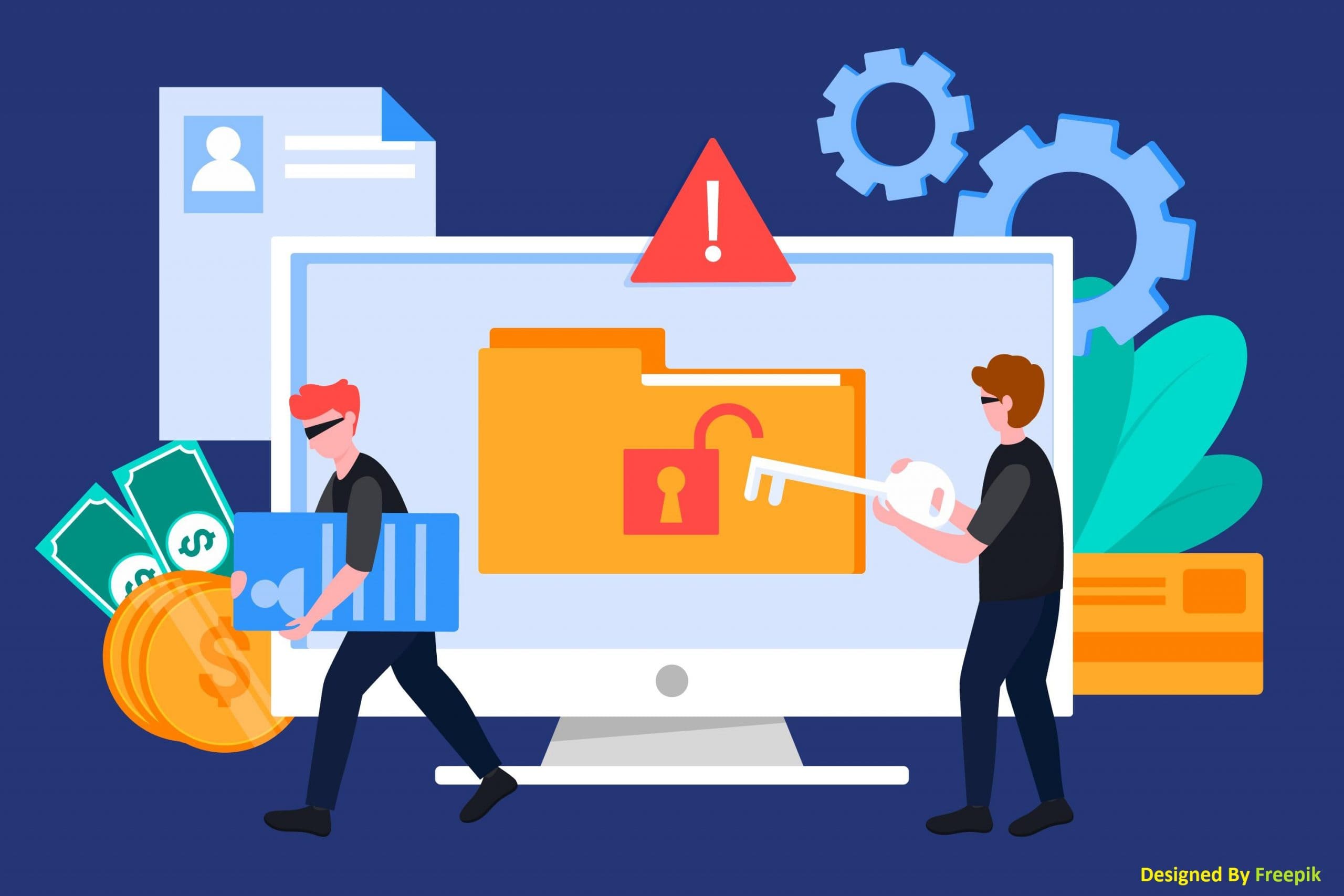
Threat Vectors Most Often Noticed by Chicagoland-Based IT Companies
Below are the top 5 types of information security threats that Chicagoland-based IT companies often notice:
1. Phishing
Phishing involves fraudulent communications intended to steal sensitive data, deploy malware, commit financial fraud, or practically any other nefarious effort you can imagine. Phishing attempts often occur over email with instructions to get the beneficiary to click a link, open an accessory, send money to a bank account, or provide sensitive information. Such sensitive information includes credentials, a common entry point for malware deployment, including ransomware, one of the most expensive cyber threats to address.
2. Vulnerability Exploit
Researchers identify new vulnerabilities daily in software, hardware, and firmware. One needs to stay on top of these searches, so threats don't surprise you.
How to keep systems updated and patched?
Vulnerability scans help identify systems that need patches. And the NIST Cybersecurity Framework recommends using a risk-management process to address vulnerabilities based on priorities.
3. Misconfigurations
Security misconfiguration results from failure to properly apply security controls to devices, networks, cloud applications, firewalls, and other systems. It can include non-payment admin credentials and open ports to unutilized web pages and unsecured files.
This passive attack vector is the organization's problem and can lead to data breaches, uncertified access, and other major security incidents.
4. Compromised Credentials
Cybercriminals use this attack vector because it is straightforward to get sensitive and valuable information through an account once established within an organization, but al., These massive destructions before they are discovered.
5. Supply Chain Vendors
No matter how robust your cybersecurity solutions are, you're only as strong as your anaemic partner, the vendor.
In today's interconnected digital world, the third-party risk is growing exponentially. Numerous high-profile data breaches in recent years have highlighted the consequences of vendor breaches, demonstrating that cybercriminals target suppliers with weak security postures as an entry point into another organization.
Preventing Malvertising
One must prevent malvertising by ad networks by adding authentication; This reduces the possibility of user compromise. Validation may include: vetting potential customers by requiring legal business documentation, two-factor authentication, and Scanning possible ads for malicious content before publishing the ad.
To minimize malware attacks, web hosts should periodically test their websites from unpatched systems and monitor those systems for any malicious activity.
Enterprise security teams must ensure that software and patches are kept up-to-date, and network antimalware tools are installed. This activity helps to reduce the risk of malvertising attacks.
Resource:
https://www.techtarget.com/searchsecurity/feature/Top-10-types-of-information-security-threats-for-IT-teams
https://www.dig8ital.com/post/the-most-common-cyber-attack-vectors-of-2022
https://arcticwolf.com/resources/blog/top-five-cyberattack-vectors/
Disclaimer:
Wherever any material is quoted as sourced from the published text with publishing rights vested in an individual, it is stated that it is a pure quotation and has no intention to claim it as our own.
Image Source: www.freepik.com
80 adminDecember 2, 2022
Get a Quote
Starting a project is just a few steps away...